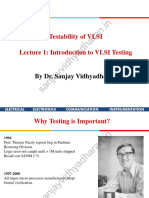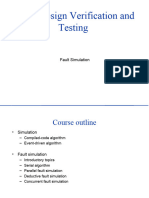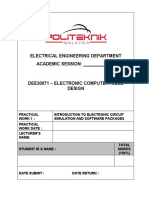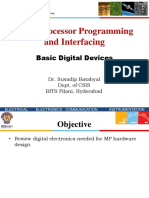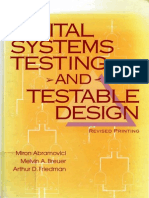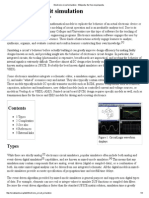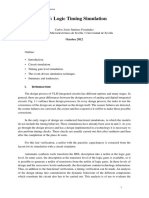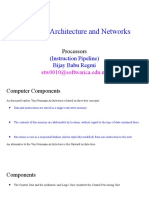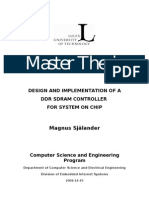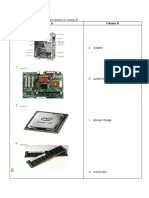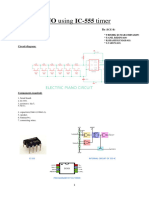0% found this document useful (0 votes)
39 views44 pagesVLSI Logic Simulation Guide
This document discusses logic simulation and testability of VLSI circuits. It covers topics like true value simulation using logic simulators to verify designs without faults. Simulation strategies like exercising all functions with critical test patterns are discussed. Modeling circuits at different levels of abstraction for simulation, from behavioral to transistor level, is also summarized. Methods for representing unknown states and modeling gates are presented. Limitations of simulation compared to actual testing are noted.
Uploaded by
mayank pCopyright
© © All Rights Reserved
We take content rights seriously. If you suspect this is your content, claim it here.
Available Formats
Download as PDF, TXT or read online on Scribd
0% found this document useful (0 votes)
39 views44 pagesVLSI Logic Simulation Guide
This document discusses logic simulation and testability of VLSI circuits. It covers topics like true value simulation using logic simulators to verify designs without faults. Simulation strategies like exercising all functions with critical test patterns are discussed. Modeling circuits at different levels of abstraction for simulation, from behavioral to transistor level, is also summarized. Methods for representing unknown states and modeling gates are presented. Limitations of simulation compared to actual testing are noted.
Uploaded by
mayank pCopyright
© © All Rights Reserved
We take content rights seriously. If you suspect this is your content, claim it here.
Available Formats
Download as PDF, TXT or read online on Scribd
/ 44








